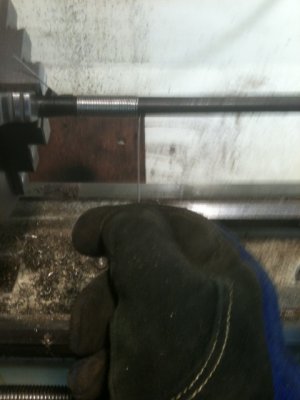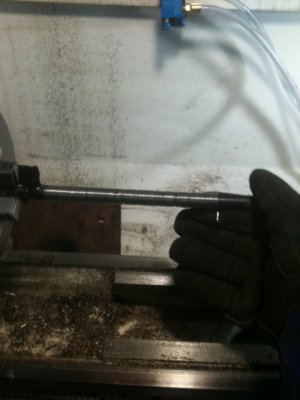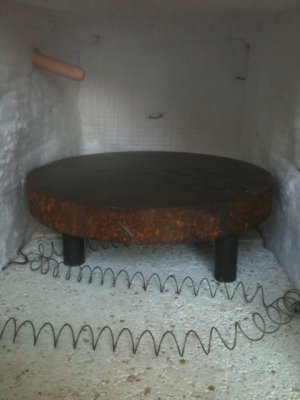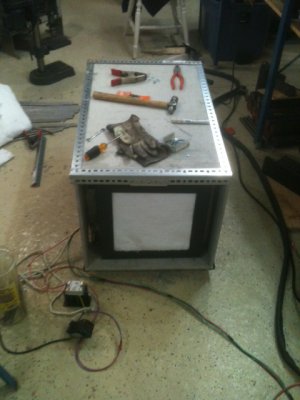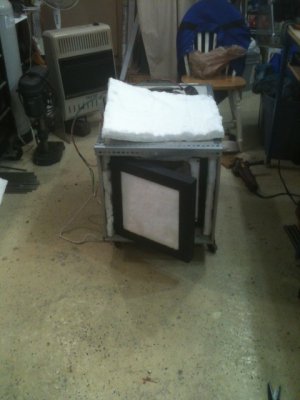- Joined
- Nov 16, 2012
- Messages
- 5,596
Hi Oldgoaly,
I was going to weld-up some racks with closely spaced joists using the remaining SS rods.
I have no plans of sticking anything (ie. hands, tongs etc) in there while the coils are energized. Call me a chicken if you want... I'm not the kind of guy who sticks a fork in the toaster to dislodge a slice of bread ... For safety, I have a switch between the controller and element which kills the high power, leaving the controller energized. The only feedback the controller gets is from the TRD -it's not monitoring current. That way, it doesn't lose track of what's going on and only thinks temperature is dropping despite it's gallant attempt to tell the coil to heat up. If I were to power off the PID mid-stream, I noticed it takes several minutes to self-adjust and re-learn the response time.
... For safety, I have a switch between the controller and element which kills the high power, leaving the controller energized. The only feedback the controller gets is from the TRD -it's not monitoring current. That way, it doesn't lose track of what's going on and only thinks temperature is dropping despite it's gallant attempt to tell the coil to heat up. If I were to power off the PID mid-stream, I noticed it takes several minutes to self-adjust and re-learn the response time.
Ray
I was going to weld-up some racks with closely spaced joists using the remaining SS rods.
I have no plans of sticking anything (ie. hands, tongs etc) in there while the coils are energized. Call me a chicken if you want... I'm not the kind of guy who sticks a fork in the toaster to dislodge a slice of bread
Ray
what are your plans for a shelf (for lack of better term) where your parts are going to sit on? It looks like yours will be safer than my Muffle furnace and kiln set up. When you I the blacksmith tongs in the heat zone, you need to be care not to touch the heating element, same with the tooling being treated. there is a bit of a magnetic attraction. worse when you are trying to get a bunch done in a hurry.


